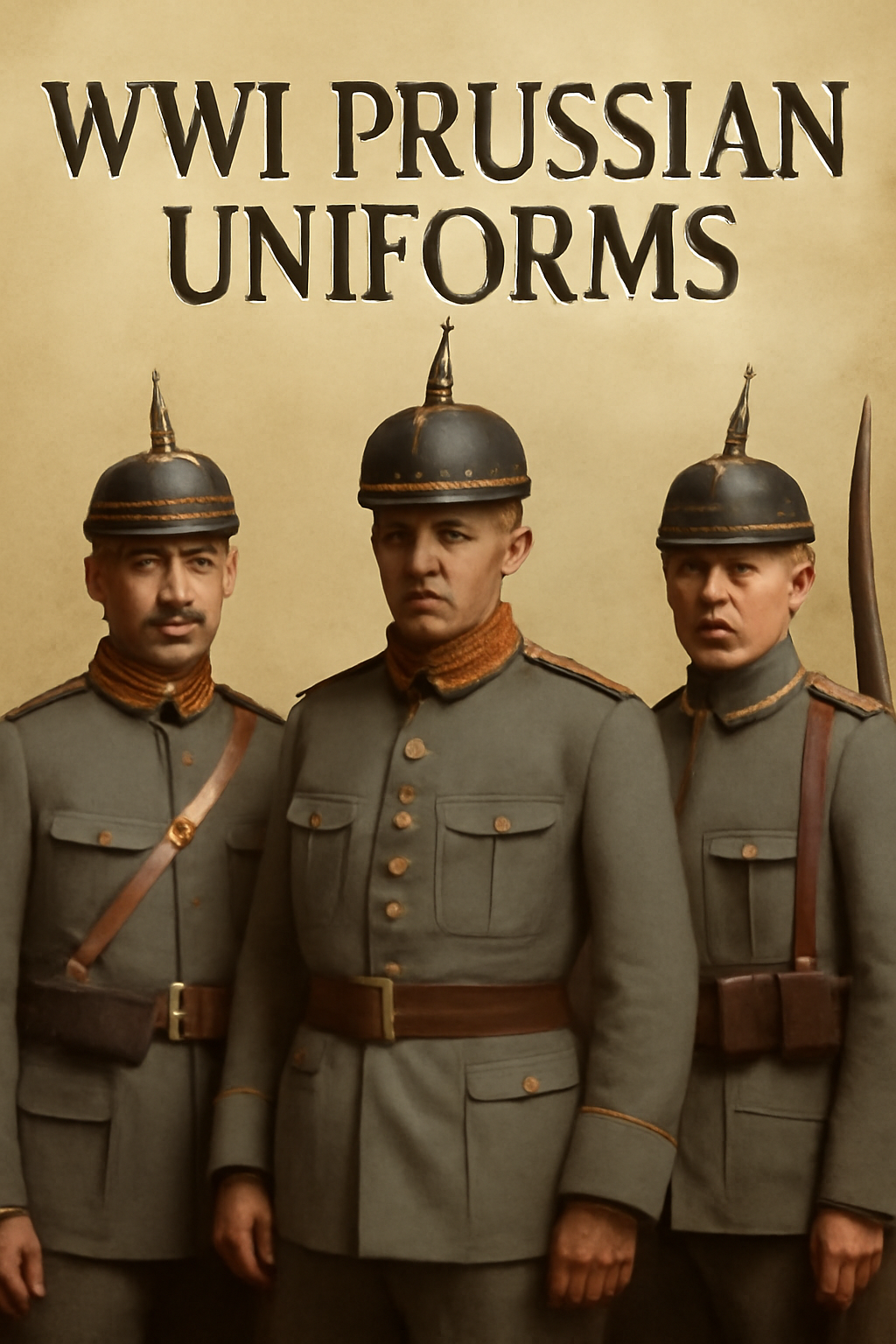
WWI Prussian Uniforms: A Comprehensive Guide to Prussian Military Attire
Published on Jun 03, 2025
WWI Prussian Uniforms: A Comprehensive Guide to Prussian Military Attire
The Prussian military uniform has a storied legacy deeply rooted in European history and warfare. From the Napoleonic Wars to World War I, Prussian uniforms evolved significantly, reflecting changes in military tactics, technology, and cultural symbolism. For enthusiasts and historians alike, understanding these uniforms offers fascinating insights into the past. At the same time, collectors and reenactors find valuable details for authenticity.
This article dives into the world of WWI Prussian uniforms, touching upon their origins in the Napoleonic era, their distinctive features, and the role they played in shaping military history.
The Legacy of Prussian Military Uniforms
Prussian military uniforms are renowned for their precision, discipline, and iconic designs. Prussia, which played a pivotal role in shaping modern Germany, developed a military culture that emphasized efficiency and tradition. These values were mirrored in their uniforms, which combined functionality with symbolic elements.
Origins: Napoleonic Prussian Army Uniforms
The roots of WWI Prussian uniforms trace back to the Napoleonic Wars (1803–1815), where Prussian troops faced off against the French Empire. The Napoleonic Prussian army uniforms were characterized by:
- Distinctive blue coats with red facings and white piping
- Tall, spiked helmets known as Pickelhaube, introduced later but inspired by earlier headgear
- White cross-belts and brass buttons symbolise regiment affiliations
- Practical wool fabrics designed for battlefield durability
These uniforms were not just clothing but represented the discipline and pride of the Prussian forces, factors that heavily influenced future designs.
Evolution into WWI Prussian Uniforms
By the time World War I broke out in 1914, Prussian uniforms had evolved significantly but retained many traditional elements. The Prussian officer uniform and enlisted men’s gear showcased a blend of practicality and ceremonial grandeur.
Key Features of WWI Prussian Uniforms
- Field Grey Wool: Unlike the bright colours of the Napoleonic era, WWI uniforms adopted a more subdued field grey to offer better camouflage.
- Pickelhaube Helmet: This iconic spiked helmet remained a symbol of the Prussian army, although later replaced by the Stahlhelm due to battlefield vulnerabilities.
- Rank Insignia: Officers wore distinct insignias, including embroidered shoulder boards and collar patches, to denote rank and regiment.
- Functional Design: Uniforms were tailored to allow movement and included pockets, sturdy boots, and belts for carrying ammunition and tools.
The Prussian Officer Uniform
Officers in the Prussian army wore more elaborate versions of the standard uniform, often featuring:
- Decorative braid and embroidery to signify higher rank
- Epaulettes and detailed collar insignia
- High-quality wool and leather gear
- Personalized medals and ribbons reflecting valour and service
The officer’s uniform balanced functionality with prestige, underscoring the hierarchical nature of the military.
Prussian Uniforms in the Napoleonic Wars: A Historical Foundation
Understanding the Prussian uniforms during the Napoleonic Wars is essential to grasp the significance of WWI attire. These early uniforms laid the groundwork for Prussia’s military identity.
- Soldiers wore tight-fitting coats with bright colours to boost morale and unit identification.
- The introduction of the Pickelhaube helmet during this period, although initially ceremonial, became an enduring symbol of the Prussian military.
- White trousers and gaiters completed the outfit, along with muskets and sabres.
These uniforms reflected an era when warfare was as much about spectacle as strategy.
Why Prussian Uniforms Matter Today
For modern historians, reenactors, and collectors, Prussian uniforms offer more than aesthetic appeal. They serve as a window into:
- The military innovations that helped shape modern Europe
- The cultural and symbolic values of discipline and order
- The evolution of military gear in response to changing warfare tactics
At Paddelaters.com, we aim to preserve this rich history by providing detailed guides and high-quality replicas that honour the legacy of Prussian military attire.
Conclusion
The evolution of Prussian military uniforms from the Napoleonic Wars through World War I reflects not only changes in warfare and technology but also the enduring values of discipline, pride, and tradition that defined the Prussian army. The shift from brightly coloured uniforms to the more practical field-grey attire of WWI demonstrates how function began to outweigh form in response to modern combat conditions. Meanwhile, iconic elements such as the Pickelhaube helmet and distinctive officer insignia maintained a strong sense of identity and hierarchy within the ranks.
